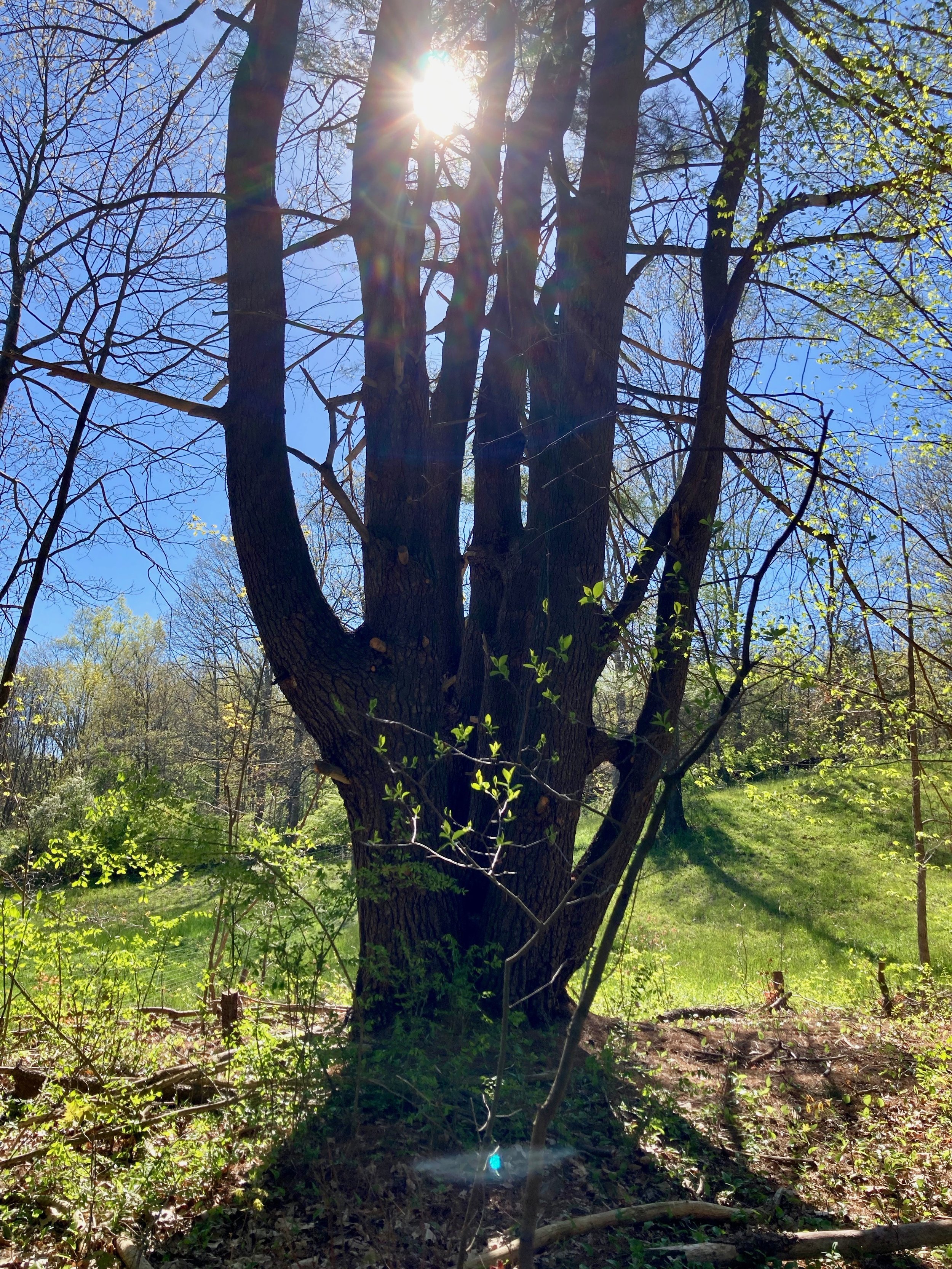The Minor Wonder
Up the hill behind the pond is a tree that struck me as a minor wonder of the world when I first came upon it: an enormous white pine with seven trunks. Lateral branches from some of these trunks fused into others, creating windows gilded by the late afternoon sun.
It is more common to see white pines with straight, singular trunks shooting up over a forest of bushier trees. In colonial times, and in the times of the Lenape before that, they grew to towering heights, the tallest on record measuring 250’, the height of a 25-story building. The shape, rot-resistance and comparative lightness of these trees made for excellent masts, prompting the King of England to claim every sizable white pine for the Royal Navy, much angering the colonists, but that is another story.
This story is about the minor wonder on our hill. According to a visiting ecologist, the creature responsible for its peculiar form is the white pine weevil, or rather, a host of them. White pine weevils are rather cute little bugs with anteater-like snouts that seek out the leaders (or central trunks) of healthy, sun soaked white pine saplings. They climb to the top, plunge their proboscises into the soft young bark, and do their business, eating and laying eggs. When the larvae hatch, they feast on the insides, an activity that is often fatal to this part of the tree. However the lower lateral branches are spared. They curve upwards, as if to become new leaders. But instead of one, now there are many.
I was astonished when I took a class on pruning and discovered that such trees are considered malformed. Foresters want trunks to be singular and straight in order to produce valuable lumber. City planners believe that multiple trunks are less stable than singular trunks, and therefore dangerous. Arborists are sometimes called in to cut them down. But I was also amused: What better tree to have growing on a patch of land intended to be a haven for people with disabilities than a gorgeous, extravagantly malformed white pine?
Yet also, what clunkiness. The mal- and dis- of malformation and disability tend to shut down the mind, subjecting subjects under their heading to a category deemed lesser and imperfect. What if instead of being guided by a dis- or mal-, we were led to the idea of responsiveness? The white pine responds to the white pine borer. The bone responds to the accident, the nerve responds to the mutation, the memory to the assault. Maybe Lonely Worm Farm should be dedicated to responsiveness.
Don’t get me wrong. I use the term disability frequently; it is a necessary word these days, and does not cause me offense. It is just good to remember that it can, as can many other words that try to pinpoint identity, diminish our perception.
In any case, I am glad our seven trunked pine would have never been claimed by the Royal Navy! Perhaps you would like to hoist yourself into the cup formed by its many trunks the next time you visit; if so–you will not be the only one. I often find scat and feathers of other creatures who spend time there when I am not around. It is a popular tree.

